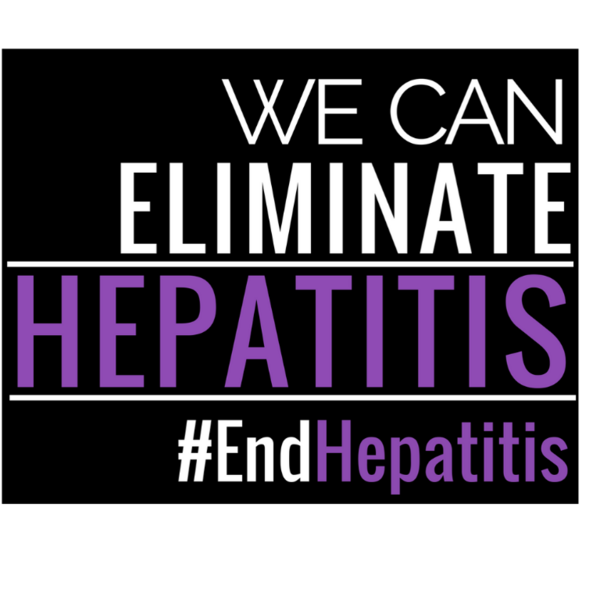
2024 Hepatitis Awareness Month: New Data Shows Progress, Disparities in Hepatitis Elimination Efforts
Every year, the month of May is dedicated to raising awareness of viral hepatitis and emphasizing the importance of hepatitis surveillance, prevention, care, and treatment resources and services. May is Hepatitis Awareness Month, May 15 is National Hispanic Hepatitis Awareness Day, and May 19 is Hepatitis Testing Day. As we enter into this important month for hepatitis awareness, several recent reports help shed light on recent successes and the work still required to end the hepatitis epidemic.
In 2020, the Department of Health and Human Services (HHS) released the Viral Hepatitis National Strategic Plan for the United States: A Roadmap to Elimination (2021–2025), which outlines goals and strategies to reduce new viral hepatitis infections and associated illnesses, deaths, and disparities in the U.S by 2025. This year, the CDC released the 2024 Viral Hepatitis National Progress Report and the2022 Viral Hepatitis Annual Surveillance Report, which are reports that highlight hepatitis A, B, and C data, displays the progress towards the 2025 strategic goals, and informs the response to hepatitis elimination.
The 2024 Viral Hepatitis National Progress Report monitors the ten indicators that assess progress towards viral hepatitis reduction. The 2024 report states that four of these ten indicators met their annual targets in 2024. The four indicator targets that were met are:
-
Goal 2: Reduce estimated new hepatitis B virus infections by 20% or more – The report shows that in 2022, there were 13,800 estimated new hepatitis B virus infections, which is below the annual target of 18,700 and 23% below the 2025 goal of 18,000.
-
Goal 3: Reduce reported rate of new hepatitis B virus infections among persons who inject drugs (PWID) by 25% or more – In 2021 and 2022, the reported rate of new hepatitis B cases among people aged 18–40 years, a proxy for PWID, was 0.6 cases per 100,000 population. This rate is 40% below the 2025 goal of 1.0 case per 100,000 population.
-
Goal 8: Reduce reported rate of hepatitis C-related deaths by 20% or more - The 2022 rate of hepatitis C-related deaths is 2.89 per 100,000 population, which is 4% below the 2025 goal of 3.00 deaths per 100,000 population.
-
Goal 10: Reduce reported rate of hepatitis C-related deaths among non-Hispanic Black persons 30% or more – in 2022, the hepatitis C-related death rate among non-Hispanic Black people was 4.75, which is below the annual target rate of 5.27 and 3% below the 2025 goal of 4.92 deaths per 100,000 population.
While four out of the ten targets were met, the 2024 Viral Hepatitis National Progress Report identifies the following strategies that can be used to reach the annual targets for the remaining six indicators:
- increase testing, vaccination, and treatment for adults and infants;
-
develop and implement new laboratory diagnostics;
-
leverage the power of data systems to improve viral hepatitis surveillance; and
-
expand harm reduction services for PWID.
The 2022 Viral Hepatitis Annual Surveillance Report displays information from the collection, analysis, and interpretation of viral hepatitis-related data reported to health departments. Key data from the 2022 report identifies the disproportionate impact of viral hepatitis among PWID and Black, Indigenous, and other people of color (BIPOC). It is essential to prioritize these communities to address the viral hepatitis epidemic.
PWIDs are substantially impacted by and vulnerable to viral hepatitis. The 2022 Viral Hepatitis Annual Surveillance Report indicated that among hepatitis cases for which injection drug use information was available, 32% reported injection drug use for hepatitis A, 24% for acute hepatitis B, and 52% for acute hepatitis C. It is imperative to prioritize vaccination and treatment efforts among PWIDs. Additionally, the CDC and other public health organizations and agencies recommend harm reduction strategies, Syringe Service Programs (SSPs), and Safe Injection Sites (SIS) as effective solutions to address viral hepatitis among PWIDs and reduce transmission.
Asian American and Pacific Islander (AAPI) communities are heavily impacted by viral hepatitis and the 2022 Viral Hepatitis Annual Surveillance Report states that in 2022, AAPI populations were reported to have the highest rates of chronic hepatitis B. While May contains many hepatitis observances, May is also Asian/Pacific American Heritage Month, which is a month dedicated to recognizing and celebrating AAPI communities and their contributions to American history and culture. Though this is a time of celebration and commemoration, we can also recognize that more needs to be done to achieve health equity and reduce disparities in these communities.
Additionally, rates of viral hepatitis substantially impact many other BIPOC communities. The report states that in 2022, Black people were reported to have the highest rates of acute hepatitis B; Indigenous American/Alaska Native (IA/AN) populations were reported to have the highest rates of acute hepatitis C and newly reported cases of chronic hepatitis C; and rates of reported cases for acute hepatitis C increased among Black, IA/AN, and Latine/Hispanic populations, while it decreased among white populations.
This month, and every month, let’s recognize the progress that has been made towards eradicating viral hepatitis, while also acknowledging the work that we must continue to do to see the world achieve viral hepatitis elimination.
For more information, view NASTAD’s hepatitis resources: